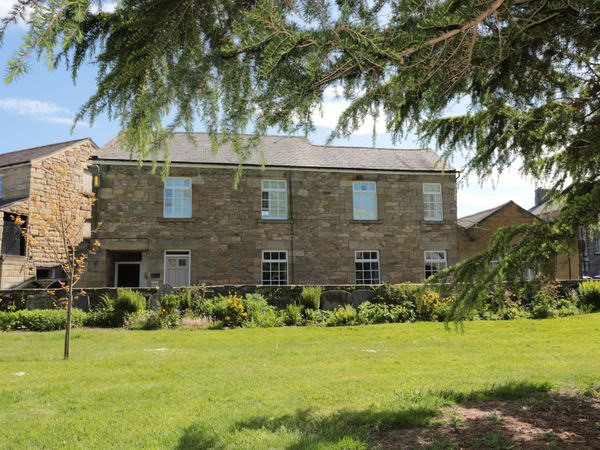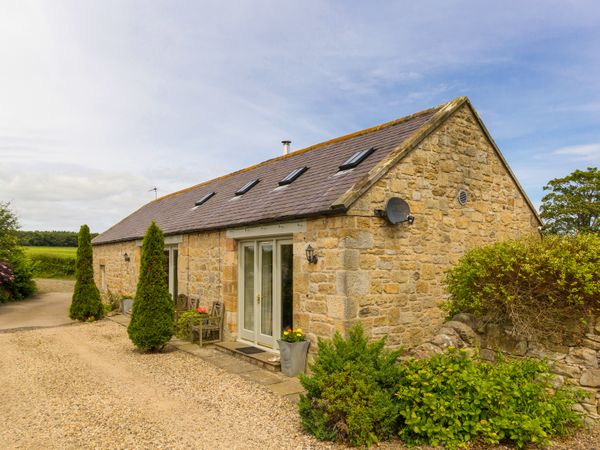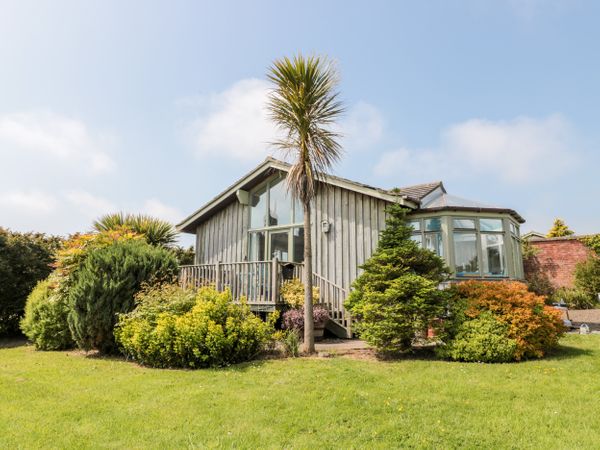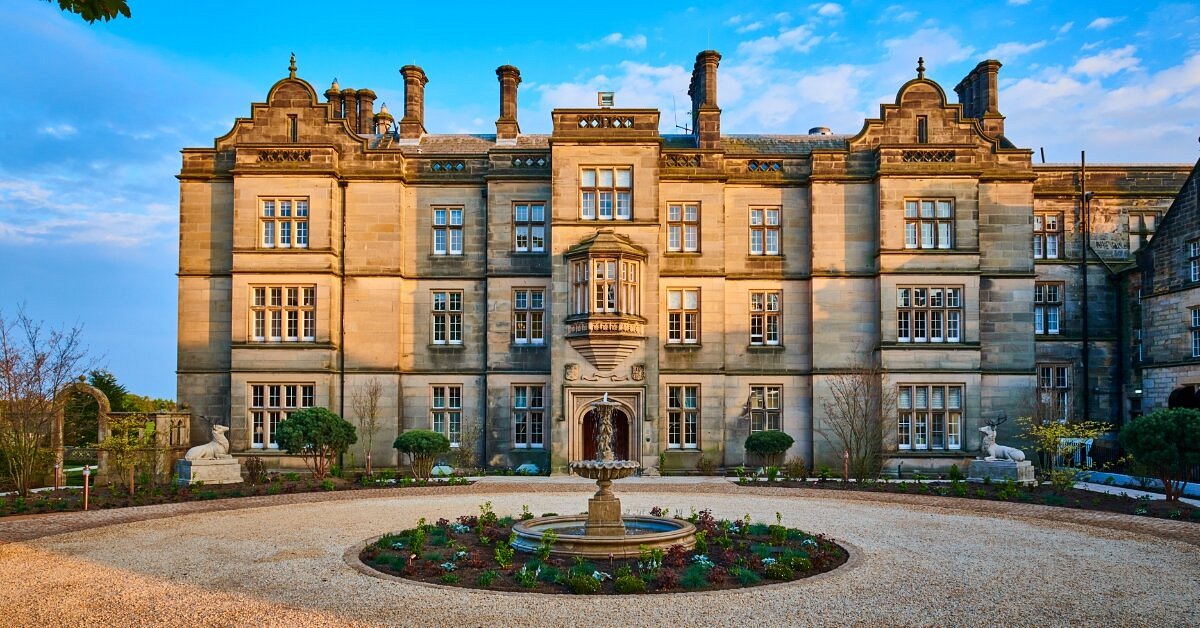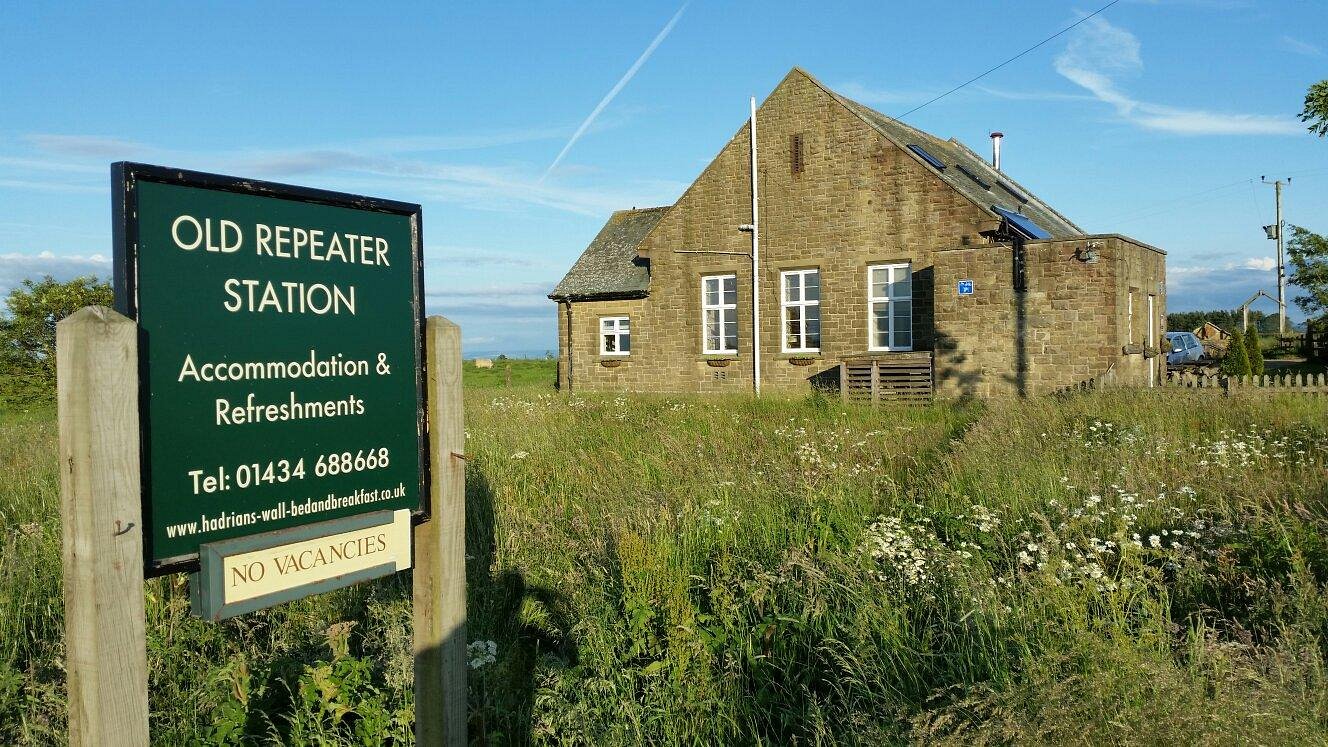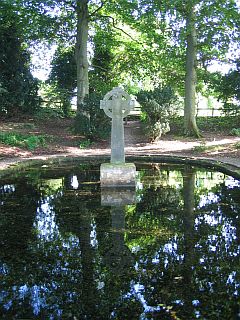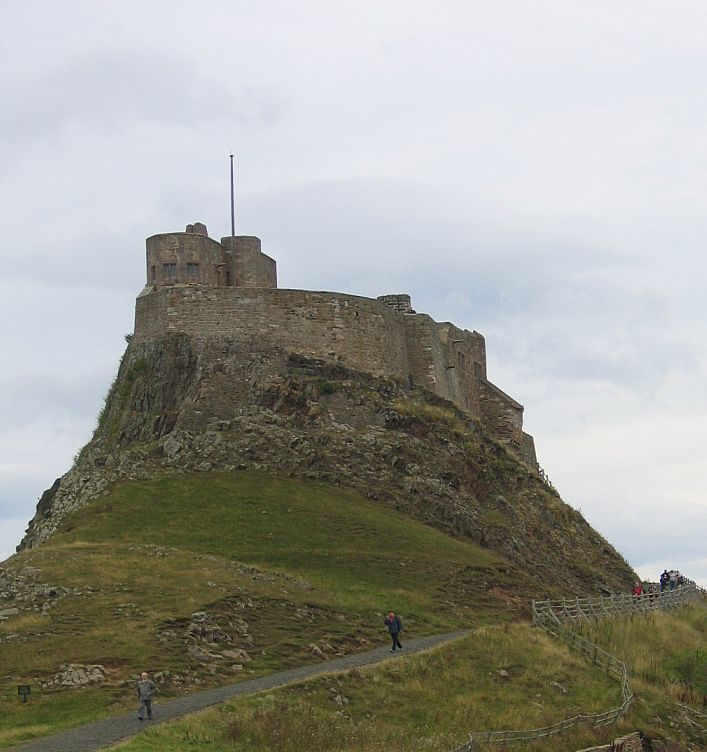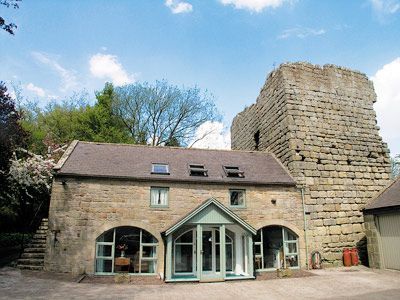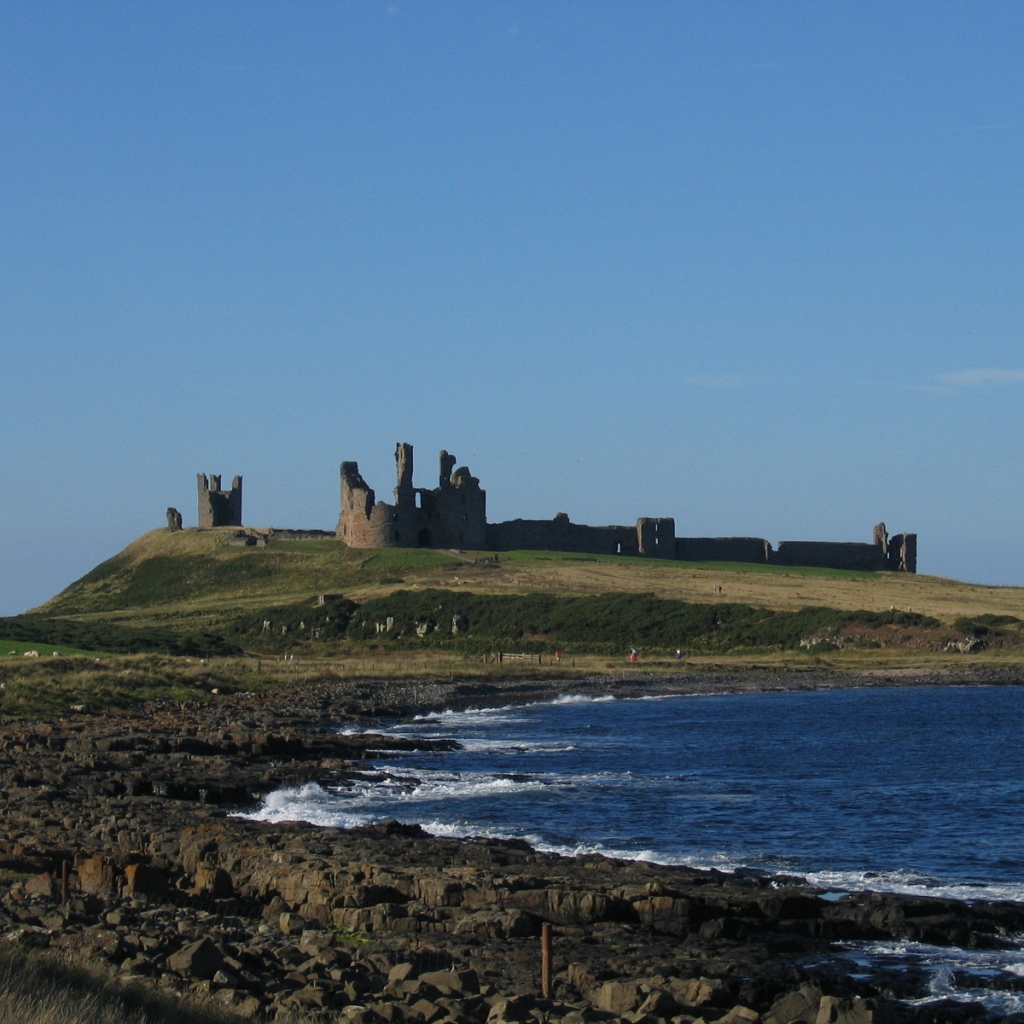Lindisfarne Castle
Whether shrouded in mist or glittering in the sun and visible for miles, Lindisfarne Castle is a landmark on the north Northumberland coast. It's a marker on an island whose early human habitants eschewed warfare.
When Aidan came to Lindisfarne Island in AD635 to found a monastery, he sought a space for contemplation and worship. That wish was granted to him for his lifetime, but his successors were less fortunate.
Under the guidance of Aidan, Cuthbert and the monks who followed in their footsteps, the monastery gained a reputation as a place of learning and pilgrimage, a place of wealth and costly manuscripts - and as so often before in other places and times, that success brought greed in its wake.
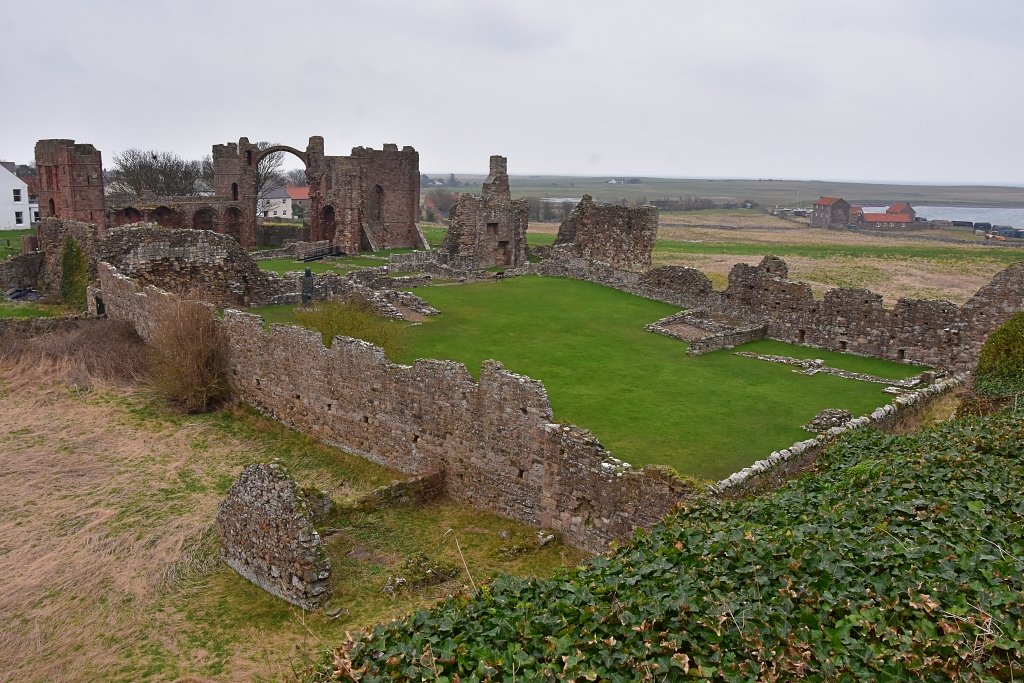 View Over Lindisfarne Priory from the Heugh © essentially-england.com
View Over Lindisfarne Priory from the Heugh © essentially-england.comThe Viking raids of the 8th and 9th centuries did untold damage both to the fabric of the monastery and its work, eventually forcing the monks to flee with their greatest treasures, the relics of St. Aidan, St. Cuthbert, and the Lindisfarne Gospels. They spent years wandering from place to place, establishing small houses of worship before moving on yet again. The monks and their sacred burden eventually found a home at Durham Cathedral and later yet, in 1082, Benedictine monks from Durham returned to Lindisfarne to re-establish the priory church. The monks resumed their work on the island, but never again would they reach that pinnacle of creativity and learning that had marked the time of Aidan and Cuthbert.
The Building of Lindisfarne Castle
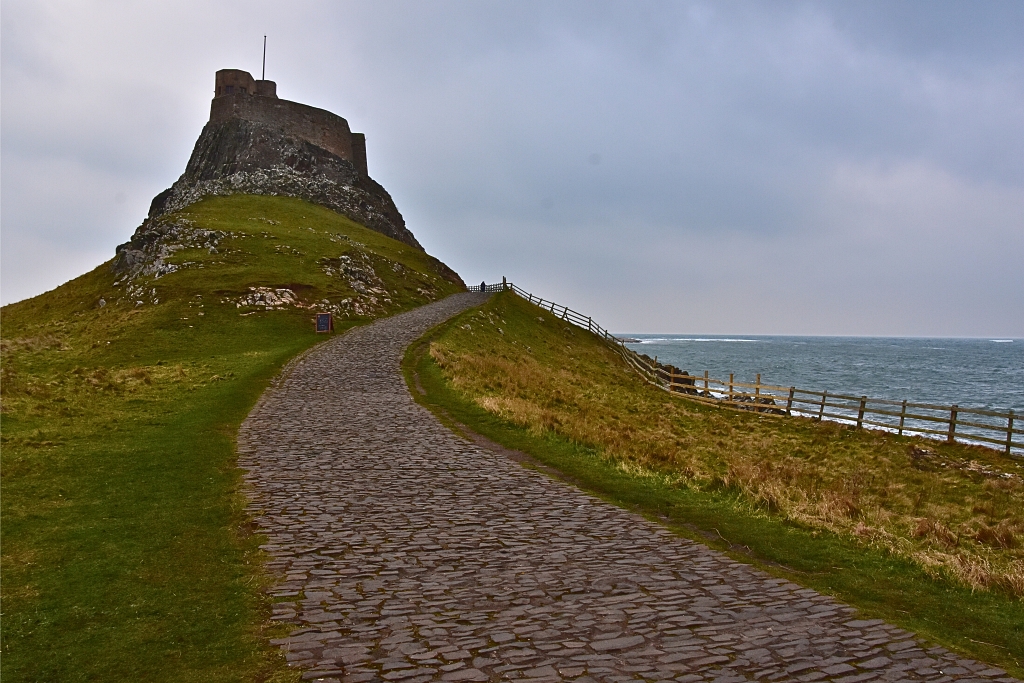 The Approach to Lindisfarne Castle © essentially-england.com
The Approach to Lindisfarne Castle © essentially-england.comThroughout the Middle Ages, Lindisfarne and its priory focused on daily life and eternal salvation, but when Lindisfarne Priory fell to Henry VIII's reorganisation of the church in 1537, Lindisfarne became a stepping stone in the fight between Scotland and England. The island’s harbour provided safe anchorage for warships, and in 1544, Edward Seymour, Lord Hertford, landed over 2,000 men on the island before marching them across the causeway, to attack Edinburgh.
In 1549, Lindisfarne acquired an artillery fort to protect its harbour, built with stone from the closed Priory.
More building works followed during Tudor and Elizabethan times, with engineers raising ramparts and battlements to house guns. The fort, rising high on a crag of volcanic rock, forever altered the island’s shape. Lindisfarne emerged from the mists of contemplation, becoming visible from far away.
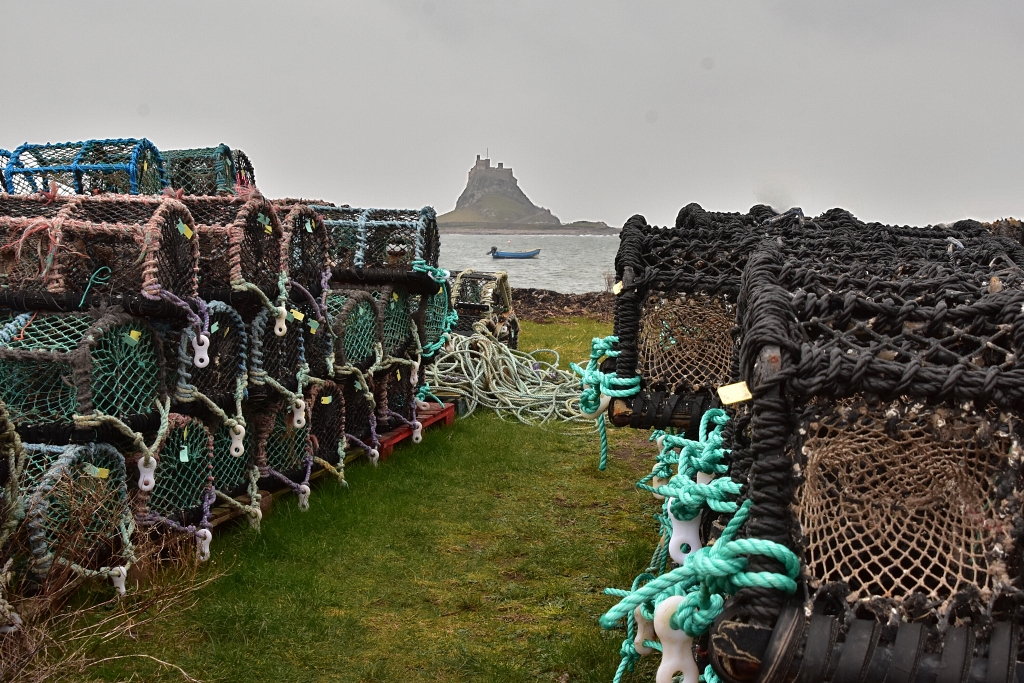 Lindisfarne Castle from the Harbour © essentially-england.com
Lindisfarne Castle from the Harbour © essentially-england.comWhen James I took the throne in 1603, England and Scotland were united, and Lindisfarne lost its strategic importance in the border war. It kept its garrison, though, and regained some of its importance during the Civil War, exchanging canon fire with a Parliamentarian warship and eventually surrendering to Parliamentarian control on 1st June 1643.
In the years following the Civil War, the castle returned to the crown and was garrisoned in times of strife. Turned into a Coastguard Station in 1819, the castle gradually fell into disrepair and returned to drowsing on the edge between land and sea.
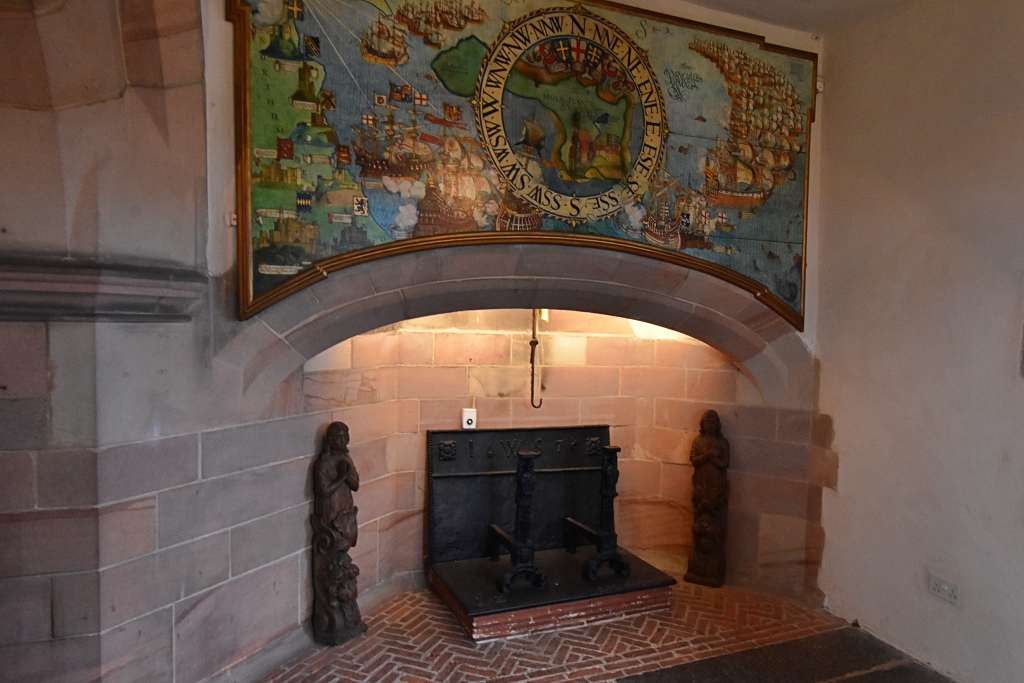 Lindisfarne Castle Entrance Hall © essentially-england.com
Lindisfarne Castle Entrance Hall © essentially-england.comIt needed a special visionary to return the castle to some sort of life, and that visionary turned out to be Edward Hudson, the founder of Country Life magazine, who visited in 1901 and fell in love with the place. Hudson bought Lindisfarne, and then - in what many consider a stroke of genius - asked his friend, the celebrated architect Edward Lutyens, to convert it into a holiday home.
Lutyens, who appreciated craftsmanship and detail while retaining an impish sense of glee, took on the renovation. And when you visit Lindisfarne Castle today, what you see is his work.
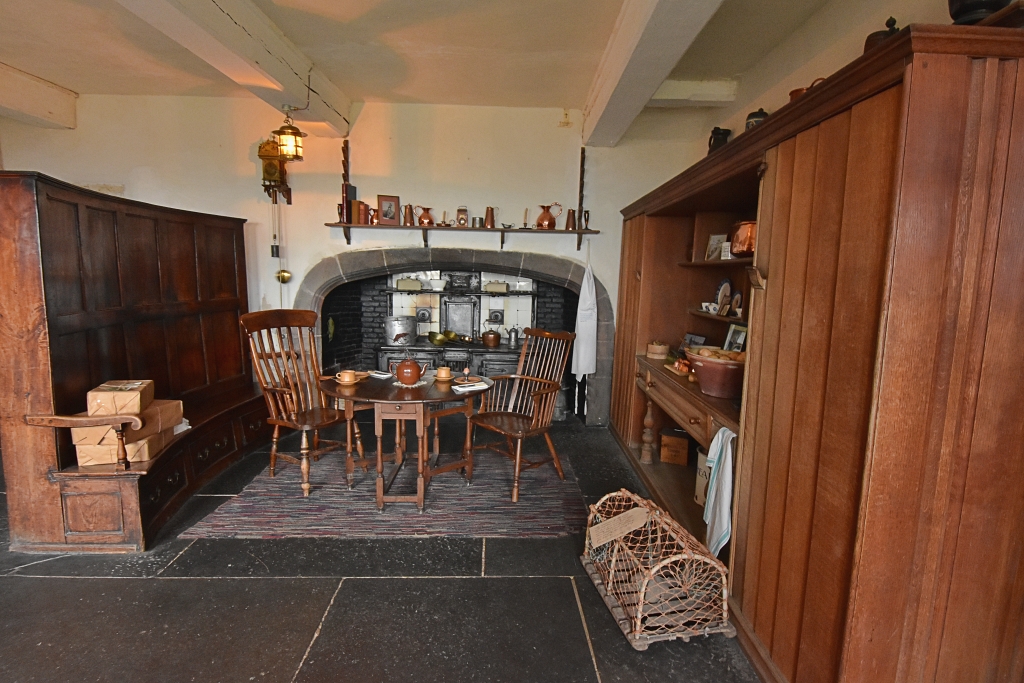 The Castle Kitchen © essentially-england.com
The Castle Kitchen © essentially-england.comHe retained the outline of the castle, just lowering some of the battlements, and removed the unused buildings inside the walls, restructuring and replacing as he went. The interior is quirkily gothic, with worn stone steps, herringbone-patterned brick walkways, and deep-set mullioned windows with stepped window seats. The entranceway greets visitors with imposing columns which draw inspiration from Durham Cathedral. Throughout the castle, you’ll find ornate fireplaces, interesting medieval doors, possibly from the Priory, and stunning antique furniture.
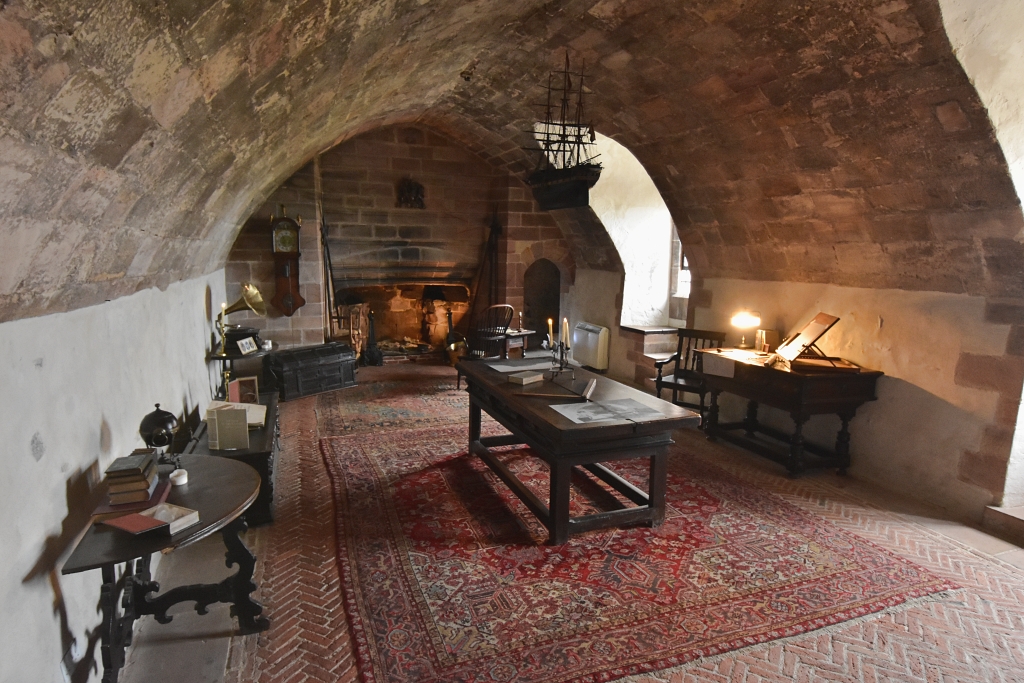 The Boat Room © essentially-england.com
The Boat Room © essentially-england.comDuring its heyday, the made-over castle was a Marmite kind of place. Hudson’s visitors either loved staying at Lindisfarne, or they hated it. There seemed to have been little middle ground, no doubt because in Lutyens’ vision of a gothic castle, workmanship, historical details, and the right materials outweighed modern creature comforts. At a time when gas and electricity became commonplace services in normal homes, Lindisfarne Castle had neither.
The part of me that adores all the quirky details admires Lutyens for sticking to his principles, while the part of me that loves to be warm and appreciates running water might be apt to disagree.
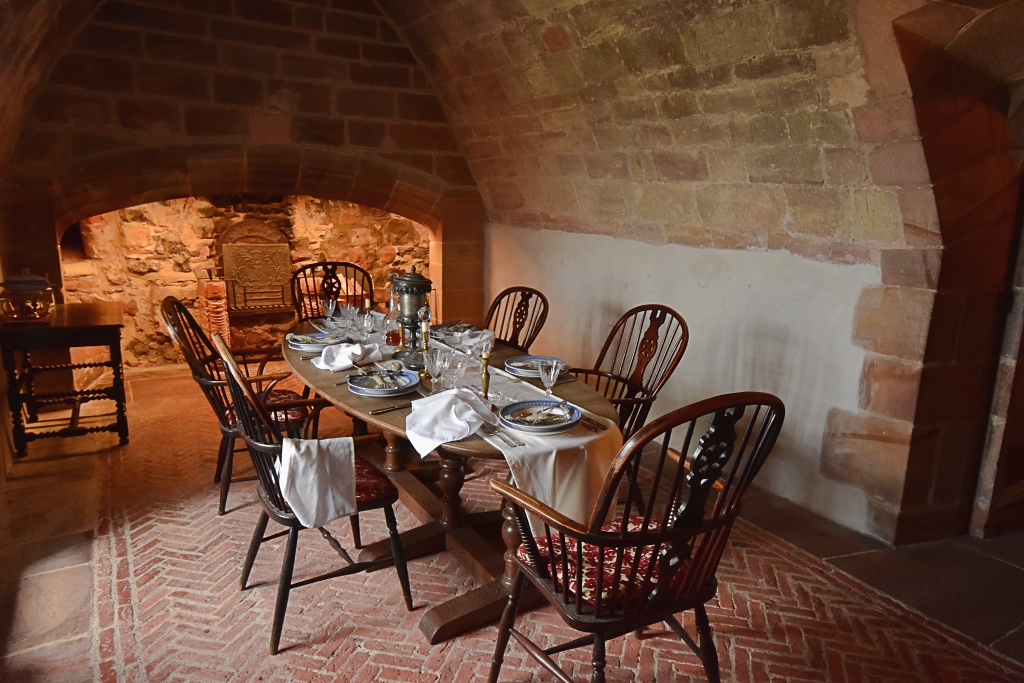 The Dining Room © essentially-england.com
The Dining Room © essentially-england.comHudson, who fell in love with Lindisfarne Castle, saw its potential, and spent a fortune converting it, didn't get to enjoy it all that long. In 1920, eighteen years after starting his renovations and only two years after buying it outright, he put Lindisfarne Castle up for sale.
Fortunately for us, its two subsequent owners kept the spirit of Hudson and Lutyens alive, revelling in the chance to live on an island that was cut off from mainland Britain twice a day. Lindisfarne Castle's last owner, Sir Edward Adolphe Sinauer de Stein, presented the castle to the National Trust in 1944, and the Trust has cared for it ever since. And even after all this time, they’re still discovering new details about Lutyens’ renovations.
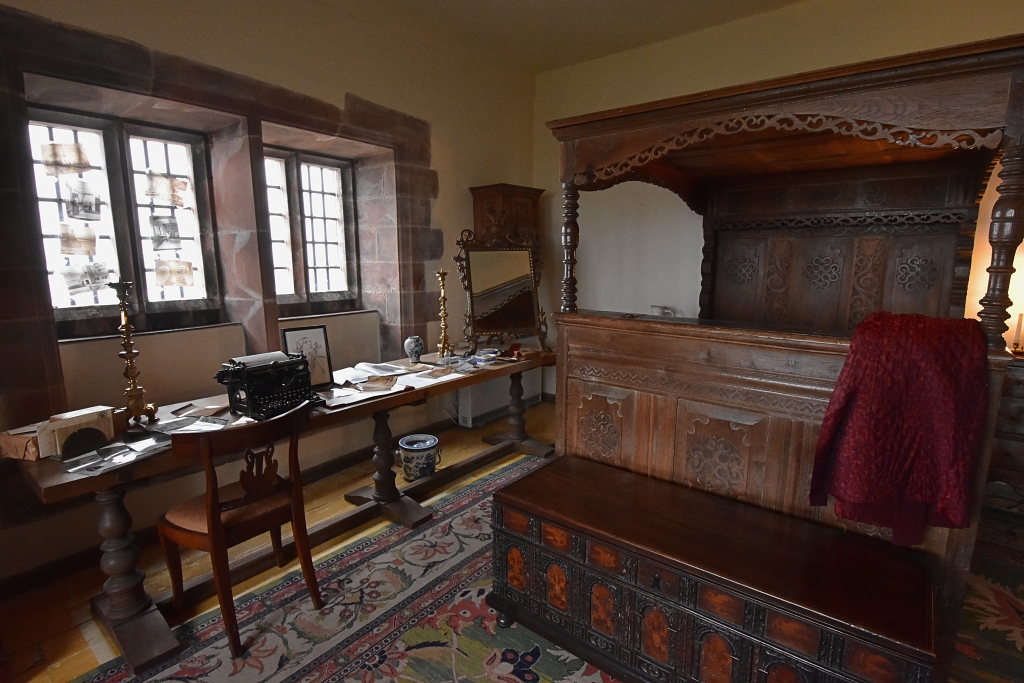 The Master Bedroom © essentially-england.com
The Master Bedroom © essentially-england.comWhen we visited in 2024, we looked in vain for a dramatic dark blue wall that we remembered from a previous visit. It was nowhere in sight, and in the end, we thought we’d misremembered. But when speaking to the guides, we learned that the deep blue hadn’t been the wall’s original colour as chosen by Edward Lutyens. The architect had used a much lighter shade – so the dramatic feature wall we recalled had changed its hue in the intervening years.
If you’re visiting Northumberland, or even if you’re travelling between Scotland and England, we’d highly recommend you take time out of your schedule to visit Lindisfarne - its priory, its castle and its miles of beach walks. Even a short visit will leave a deep impression because Lindisfarne is like nowhere else.
Come and experience it for yourself. Just make sure you keep an eye on the tide.
For more information on Lindisfarne Castle, opening times, and events please use the National Trust website.
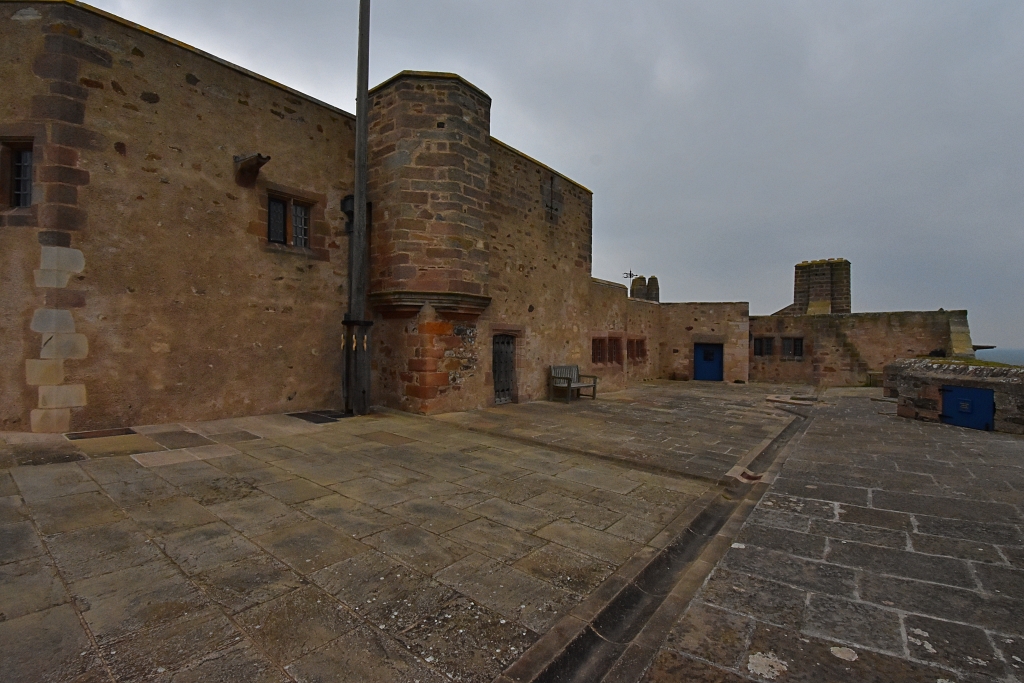 Lindisfarne Castle Upper Battery © essentially-england.com
Lindisfarne Castle Upper Battery © essentially-england.comWhere We Stayed
For our March 2024 stay in Northumberland we chose Sunningdale Cottage in Rothbury. This wonderful and cosy mews cottage was just a few metres from the High Street and very convenient for the pubs and restaurants. There’s hillside walking from the door and Cragside House is about one mile away. Sunningdale Cottage is highly recommended by Essentially England.
Are You Planning to Visit Northumberland?
Where You Could Stay
There's a reason Northumberland is one of my favourite English counties. Its landscape is utterly gorgeous with long beaches and empty sweeps of hills that just beg to be walked. In between you can find small towns and pretty villages, conntected by lanes that are great on the bike as long as you have the legs for climbing. And there are holiday cottages to suit all tastes and budgets.
To see other holiday cottages in Northumberland click here. Or check out holiday cottages in other parts of England by clicking here.
However, if you prefer to stay in a hotel, then here is a small selection to consider.
Many years ago, on our first visit to Northumberland we did use the campsite attached to Clennell Hall Hotel. The location is fantastic, and the camp site lovely and clean. The hotel bar was very welcoming!
You can view all hotels in Northumberland by using this link or you could use our Booking.com search box.
What You Could See and Do
Even if you stayed a month, you'd find that you don't have enough time to explore the county top to bottom and see everything it has to offer. There's plenty of history from Hadrian's Wall near Hexham to Lindisfarne in the north with reams of castles and ruins in between. There are beaches and seaside towns like Craster, Alnmouth and Seahouses - and some of the best fish & chips in all of England. There are market towns like Haltwhistle, Rothbury, Bellingham, Berwick, Warkworth and Harbottle to explore. And there are hillsides to climb and the great outdoors to enjoy.
Are you feeling in need of a holiday yet? Here are a few more pages that might give you ideas...
- Hadrian's Wall
- Berwick-upon-Tweed
- Alnwick Castle
- The Holy Island of Lindisfarne
- Take a stroll on the beach at Alnmouth
- Visit Alnwick with its famous castle and the cosy Barter Books bookshop
- Warkworth Castle
- Dunstanburgh Castle
- Cycling in Northumberland - my favourite tandem tour EVER!
- Spend the day exploring Cragside, near Rothbury, the worlds first home to have lighting powered by hydro-electricity
- Walk the St. Oswald's Way starting from Heavenfield and finishing at Lindisfarne
And if you want to explore more of Northumberland and its martial history, check out this Northumberland Castle Tour.
For more Northumberland sites return from our Lindisfarne Castle page to the Northumberland page.


